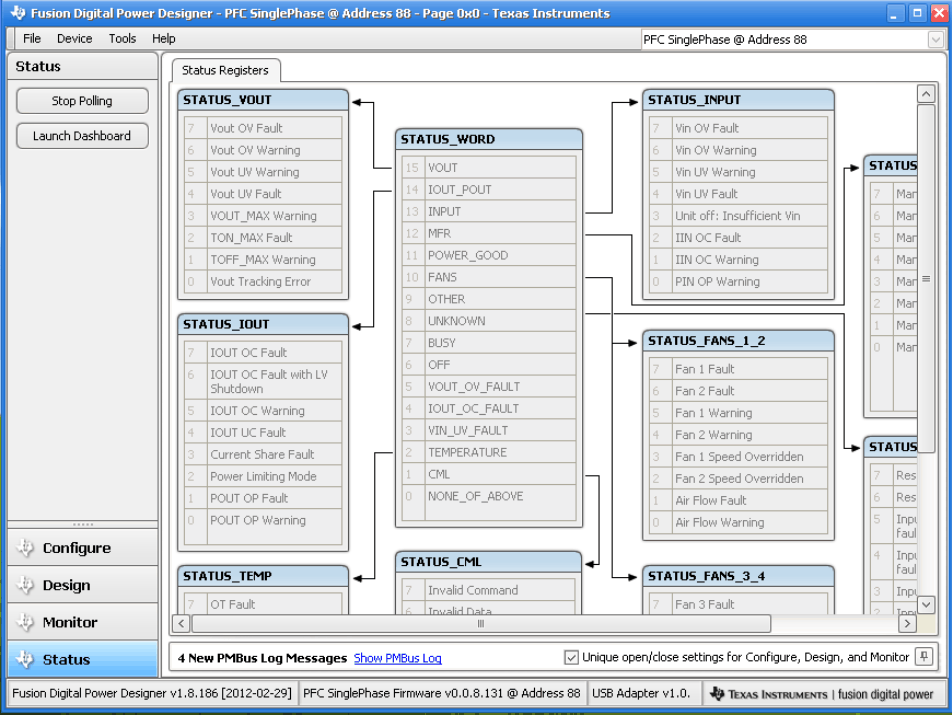SLUU885C March 2012 – June 2024 UCD3138 , UCD3138064 , UCD3138064A , UCD3138128 , UCD3138A , UCD3138A64
- 1
- 2
- Abstract
- 1 Introduction
- 2 Description
- 3 Electrical Performance Specifications
- 4 Schematics
- 5 Test Setup
- 6 List of Test Points
- 7 List of Terminals
- 8 Test Procedure
- 9 Performance Data and Typical Characteristic Curves
- 10EVM Assembly Drawing and PCB Layout
- 11List of Materials
- 12Digital PFC Description
- 13Evaluating the Single-Phase PFC with GUI
- 14Monitoring, Re-configuring and Re-tuning with Designer GUI
- 15Digital PFC Firmware Development
- 16References
- 17Revision History
13.3.2 Status
When click tab Status, its corresponding page is shown in Figure 13-3. What can be seen is all entries are grayed out. This means nothing was designed to show from this tab. The page of Status provides all possible PMBus supported variables in communication. To activate these variables in communication, corresponding firmware codes need to be in place. As what can be seen is all in gray which means none of the variables is established in communication in this page.
 Figure 13-3 Page of Status
Figure 13-3 Page of Status